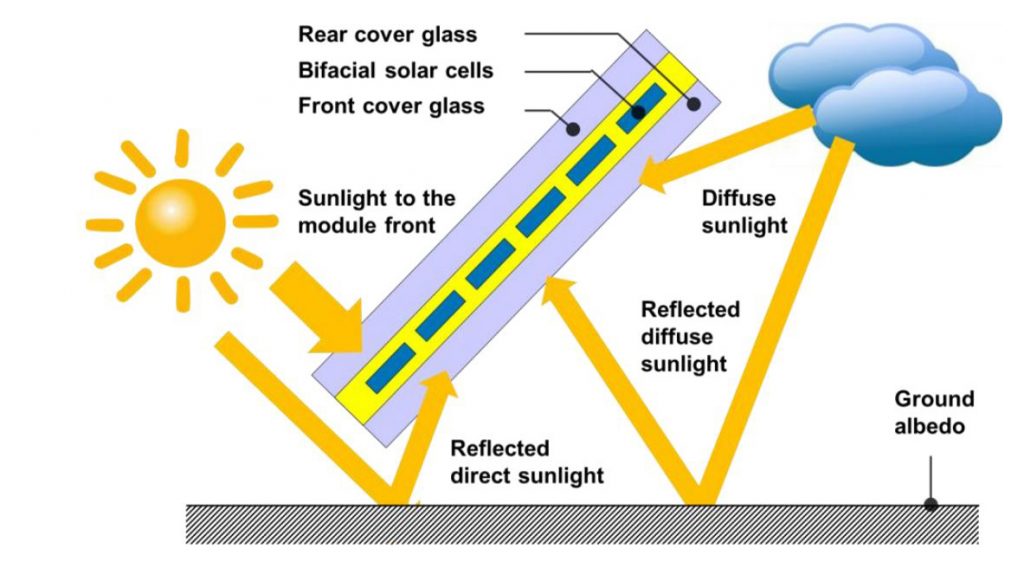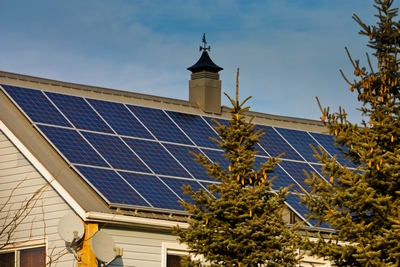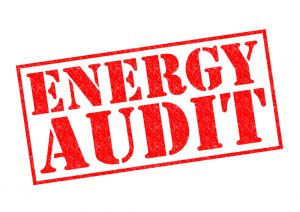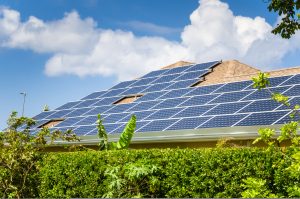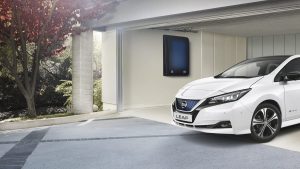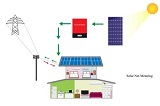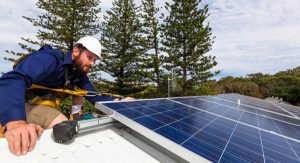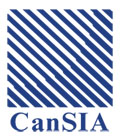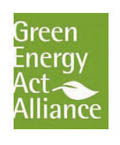When choosing the type of solar panels for your photovoltaic system, bifacial solar panels can offer a few advantages over traditional solar panels.
How do bifacial solar panels work?
Standard, or monofacial, solar panels only use one side to generate solar energy. However, as their name suggests, bifacial solar modules collect the sun’s rays on both sides. Because they gather energy through solar cells on their front and rear, bifacial solar panels can be 30 to 50% more efficient than conventional models.
Consider these additional qualities of bifacial solar panels.
- Durable: Both sides are UV-resistant.
- More compact: Bifacial solar panels can generate more energy with a smaller footprint. Therefore, it takes fewer bifacial panels to achieve the same degree of solar power as a typical monofacial solar array.
- Customizable: Bifacial modules come in many designs. Some are framed, while others are frameless. Some are dual-glass, and others use clear backsheets. Most use monocrystalline cells, but polycrystalline options are available.
How Do Bifacial Solar Panels Work?
The top solar cells of a bifacial solar panel system function like the traditional arrays you might have seen. Because they face the sun, they capture UV rays directly, absorbing only some wavelengths.
Meanwhile, the bottom solar cells absorb light that reflects off the ground, also known as albedo light. Since white or light colors reflect better than dark ones, painting the area under the solar array white or silver will increase the unit’s ability to capture more energy.
How Do Professionals Install Bifacial Solar Panels?
Unlike monofacial solar panel systems that sit in racks parallel to a surface such as a rooftop, bifacials produce more energy when professionals install them at various degrees off the roof or ground.
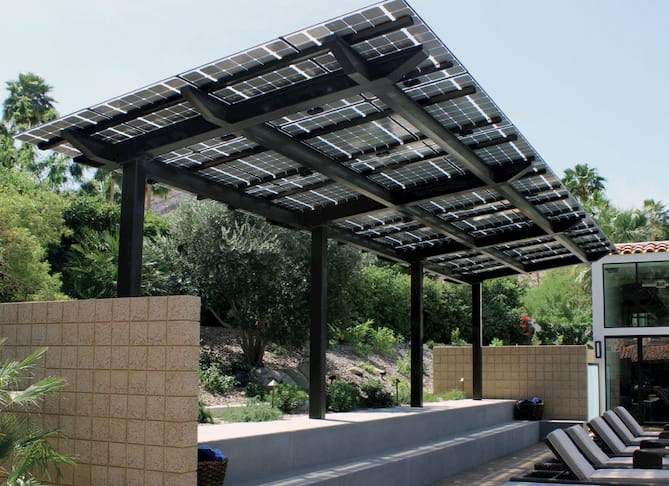
Sunlight bounces off objects at different angles, which allows bifacial solar panels to capture maximum light. They can even be productive on overcast days, when monofacial solar cells might struggle to collect energy.
A half-and-half setup can capitalize on the daily rotation of the earth and sun. East-facing panels will absorb early-morning sunshine, while the west-facing side will be more productive in the afternoon. This installation option produces two daily energy peaks.
Do Bifacial Solar Panels Have Any Drawbacks?
While bifacial solar panels have a range of pluses, they also come with some disadvantages. If you’re comparing the pros and cons of bifacial vs. monofacial solar cells, here’s what you need to know.
- Bifacial solar panels come with a higher installation cost.
- The double glass involved in bifacial solar systems also makes them correspondingly more expensive.
- Bifacial solar arrays tend to be heavier, which can limit your installation options.
- If you’re planning to install your bifacial solar panels in a grassy area, be aware that grass is less reflective than a light-colored surface, which can reduce your panels’ efficiency. White-painted surfaces can be up to 80% albedo, whereas grass is only about 23%, according to a whitepaper published by Burns McConnell.
Are Bifacial Solar Panels Right for You?
Until recently, most bifacial solar panel installations were for large-scale commercial properties. However, as the technology continues to improve and costs get lower, it’s put the option within realistic reach of more home and business owners.
Because bifacial solar panels provide the same amount of solar power as some conventional solar panel systems with a smaller footprint, you don’t need as much space on your property for a solar array. However, for optimal performance, a light-colored surface is essential.
Many experts predict bifacial solar panels are the industry’s next major trend. If you aim to become more energy-independent and environmentally friendly, request a free quote from us today.


